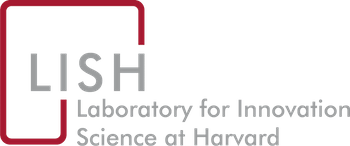Eva C. Guinan, Karim R. Lakhani, and Kevin J. Boudreau. 2013. “
Experiments in Open Innovation at Harvard Medical School.” MIT Sloan Management Review 54 (3).
Publisher's VersionAbstractThis article examines an experiment in open innovation applied to scientific research on Type 1 diabetes at Harvard Medical School. In the traditional research process in academic medicine, a single research team typically carries through each stage of the process — from generating the idea to carrying out the research and publishing the results. Harvard Catalyst, a pan-Harvard agency with a mission to speed biomedical research from the lab to patients' bedsides, modified the traditional grant proposal process as an experiment in bringing greater openness into every stage of research. Participation was successfully extended to nontraditional actors. With support from Dr. William Chin, the executive dean for research at Harvard Medical School and a former vice president of research at Eli Lilly (an early adopter of open innovation), Harvard Catalyst started with the front end of the innovation system by opening up the process of generating research questions. Instead of focusing on identifying individuals who might tackle a tough research problem, Harvard Catalyst wanted to allow an open call for ideas in the form of a prize-based contest to determine the direction of the academic research. This might lead to potentially relevant questions not currently under investigation or largely ignored by the Type 1 diabetes research community. Harvard Catalyst partnered with the InnoCentive online contest platform to initiate the idea generation process. Participants had to formulate well-defined problems and/or hypotheses to advance knowledge about Type 1 diabetes research in new and promising directions. In the end, 150 new hypotheses and research pathways were proposed. Teams were invited to propose projects on the 12 most promising of these; today, seven teams are carrying out the research. The Harvard Catalyst experience suggests that open-innovation principles can be adopted even within a well-established and experienced innovation-driven organization.
Karim R. Lakhani, Katja Hutter, Stephanie Healy Pokrywa, and Johann Fuller. 2013.
Open Innovation at Siemens. Harvard Business School Case. Harvard Business School.
Publisher's VersionAbstractThe case describes Siemens, a worldwide innovator in the Energy, Healthcare, Industry, and Infrastructure & Cities sectors, and its efforts to develop and commercialize new R&D through open innovation, including internal and external crowdsourcing contests. Emphasis is placed on exploring actual open innovation initiatives within Siemens and their outcomes. These include creating internal social- and knowledge-sharing networks and utilzing third party platforms to host internal and external contests. Industries discussed include energy, green technology, infrastructure and cities, and sustainability. In addition, the importance of fostering a collaborative online environment and protecting intellectual property is explored.
Karim R. Lakhani, Kevin J. Boudreau, Po-Ru Loh, Lars Backstrom, Carliss Y. Baldwin, Eric Lonstein, Mike Lydon, Alan MacCormack, Ramy A. Arnaout, and Eva C. Guinan. 2013. “
Prize-based Contests Can Provide Solutions to Computational Biology Problems.” Nature Biotechnology, 31, 2, Pp. 108-111.
Publisher's VersionAbstractIn summary, we show that a prize-based contest on a commercial platform can effectively recruit skilled individuals to apply their knowledge to a big-data biomedical problem. Deconstruction and transformation of problems for a heterogeneous solver community coupled with adequate data to produce and validate results can support solution diversity and minimize the risk of sub-optimal solutions that may arise from limited searches. In addition to the benefits of generating new knowledge, this strategy may be particularly useful in situations where the computational or algorithmic problem, or potentially any science problem, represents a barrier to rapid progress but where finding the solution is not itself the major thrust of the investigator’s scientific effort. The America Competes Act passed by the US Congress provides funding agencies with the authority to administer their own prize-based contests and paves the way for establishing how grant recipients might access commercial prize platforms to accelerate their own research.
 Prize-based_Contests_Can_Provide_Solutions.pdf
Prize-based_Contests_Can_Provide_Solutions.pdf 